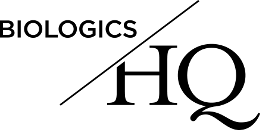In June 2024, the Court granted preliminary injunctions against the commercial launch of three EYLEA® (aflibercept) biosimilars, Samsung Bioepis’s Opuviz™ (aflibercept-yszy) (Case Nos. 1:23-cv-00094 (N.D.W. Va.), 1:23-cv-00106 (N.D.W. Va.) / MDL 1:24-md-03103 (N.D.W. Va.)), Formycon’s Ahzantive® (aflibercept-mrbb) (Case Nos. 1:23-cv-00097 (N.D.W. Va.) / MDL 1:24-md-03103 (N.D.W. Va.)), and Celltrion’s CT-P42 (aflibercept) (Case Nos. 1:23-cv-00089 (N.D.W. Va.) / MDL 1:24-md-03103 (N.D.W. Va.)). The Court previously entered a permanent injunction against Biocon and Mylan’s Yesafili™ (aflibercept-jbvf) (Case Nos. 1:22-cv-00061 (N.D.W. Va.) / MDL 1:24-md-03103 (N.D.W. Va.)) (previously reported Permanent Injunction Issued Preventing Launch of EYLEA® Biosimilar Yesafili™).
While the preliminary injunction orders for Ahzantive® and CT-P42 currently remain sealed, on June 24, 2024, the Court unsealed portions of its preliminary injunction order relating to Opuviz™. The preliminary injunction is for claims 4, 7, 9, 11, 14-17, and 55 of U.S. Patent No. 11,084,865 (“the ’865 patent”), all of which (except claim 55), the Court previously found to be valid in Regeneron’s case against Biocon and Mylan’s Yesafili™ (No. 1:22-cv-00061 (N.D.W. Va.)) (previously reported EYLEA® (aflibercept) and Soliris® (eculizumab) IPR and BPCIA Litigation Updates).
In granting the preliminary injunction, the Court found that Opuviz™ met all of the claim limitations of the asserted claims, crediting the opinions of Regeneron’s expert over Samsung Bioepis’s, particularly with respect to the analytical tests required to determine the percentage of aflibercept present in its “native conformation” at various time points, and therefore found Regeneron was likely to succeed on infringement.
Samsung Bioepis challenged the ’865 patent’s validity under the doctrine of obviousness-type double patenting (OTDP) and for lack of written description. The Court found that Samsung Bioepis’s arguments did not raise a “substantial question” of validity and that Regeneron had established a likelihood of success on the merits regarding the ’865 patent’s validity.
With respect to OTDP, the Court agreed with Regeneron that U.S. Patent No. 9,340,594 (“the ’594 patent”) is not a proper OTDP reference, rejecting Samsung Bioepis’s argument that filing a terminal disclaimer for one patent can invalidate a related patent for OTDP. The Court further agreed with Regeneron that even if the ’594 patent was a proper reference patent, claim 5 is patentably distinct from the claims of the ’865 patent in several respects.
With respect to written description, the Court found that claims reciting “at least 98% native conformation…” with no upper limit did have adequate written description, based on eight examples in the specification showing a range of 98.5 – 99.2%, as this disclosure allowed a person of ordinary skill to approach the upper limit for the claim terms given it was less than 1% shy of the absolute upper limit of 100%.
The Court found Regeneron would suffer irreparable harm should Opuviz™ launch, including harm to market share, pricing, payor relationships, and reputation, that a damages award could not fully remedy. The Court did not agree with Regeneron’s arguments that Opuviz™’s launch would cause irreparable harm with respect to research and development funding.
On balance, the Court found the hardships favored injunctive relief, as did the public interest in protecting rights secured by valid patents and encouraging innovation.
Numerous appeals are ongoing related to the injunctions, including Samsung Bioepis’s CAFC Appeal Nos. 24-1965 and 24-1966, Formycon’s 24-2009, and Biocon / Mylan’s 24-2002.
Regeneron reported EYLEA® sales of $5.72 billion in 2023.
For more information about these and other biosimilar patent disputes, please visit BiologicsHQ.
_____________________________________________________
The author would like to thank April Breyer Menon for her contributions to this article.


